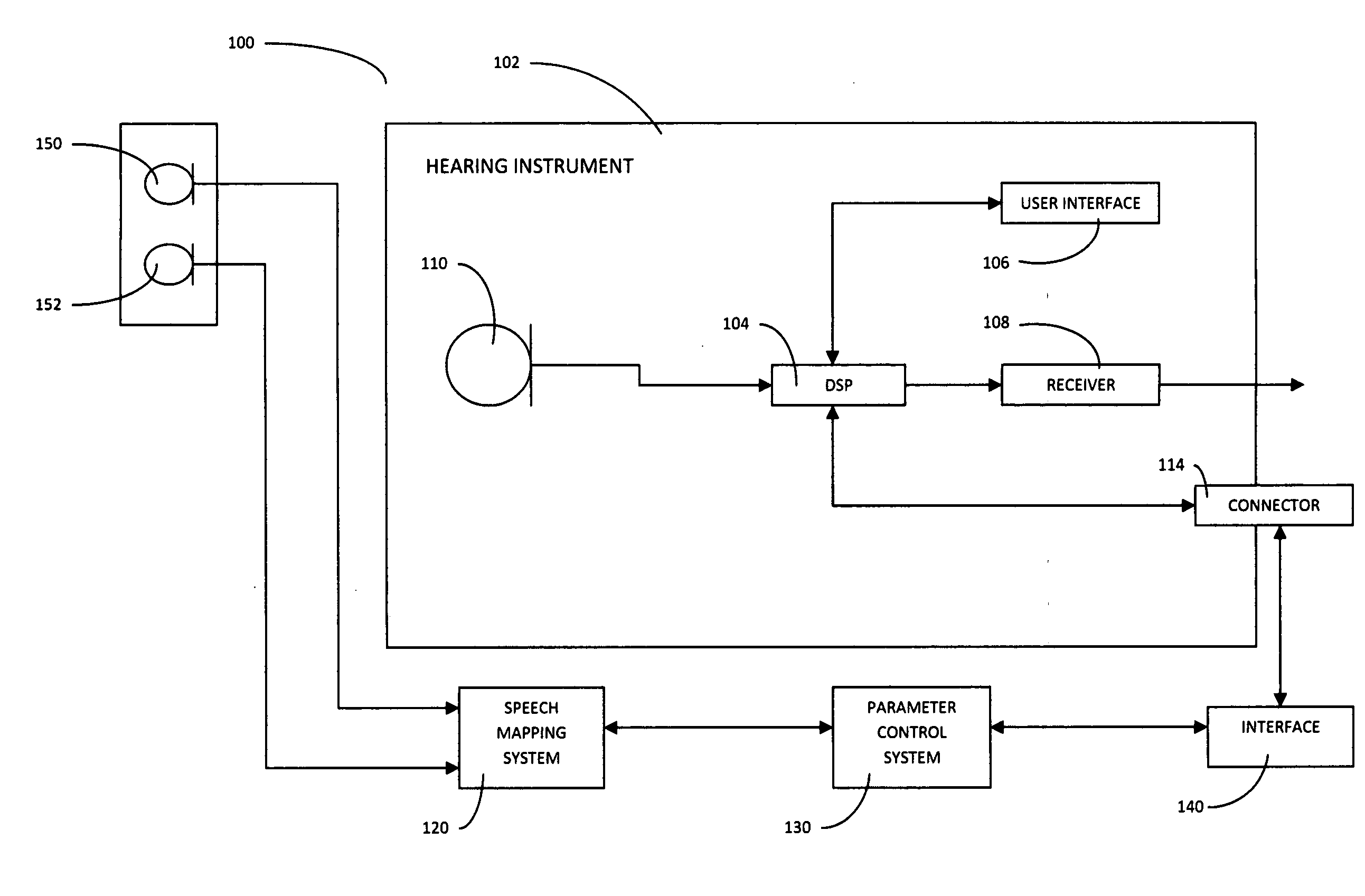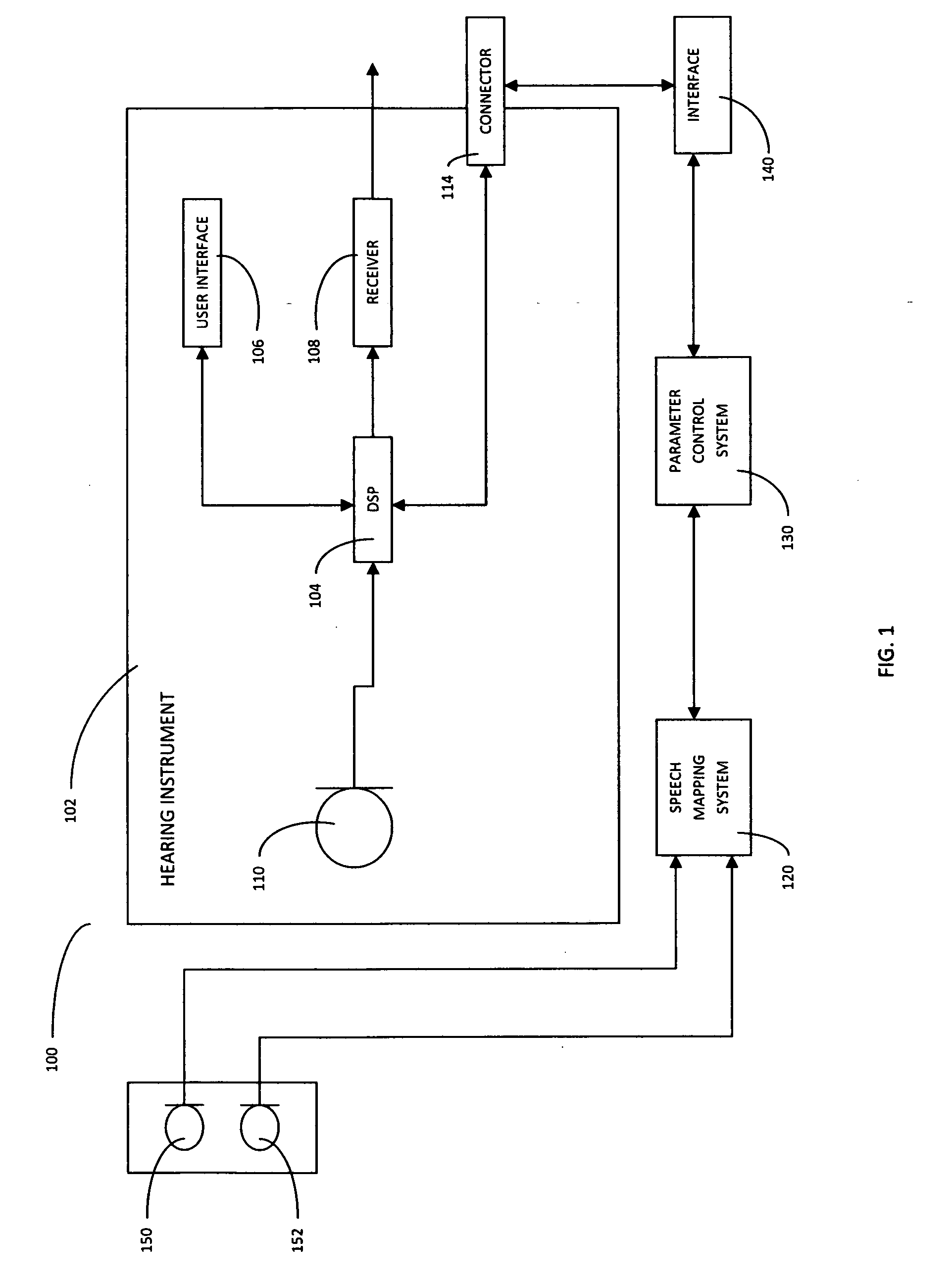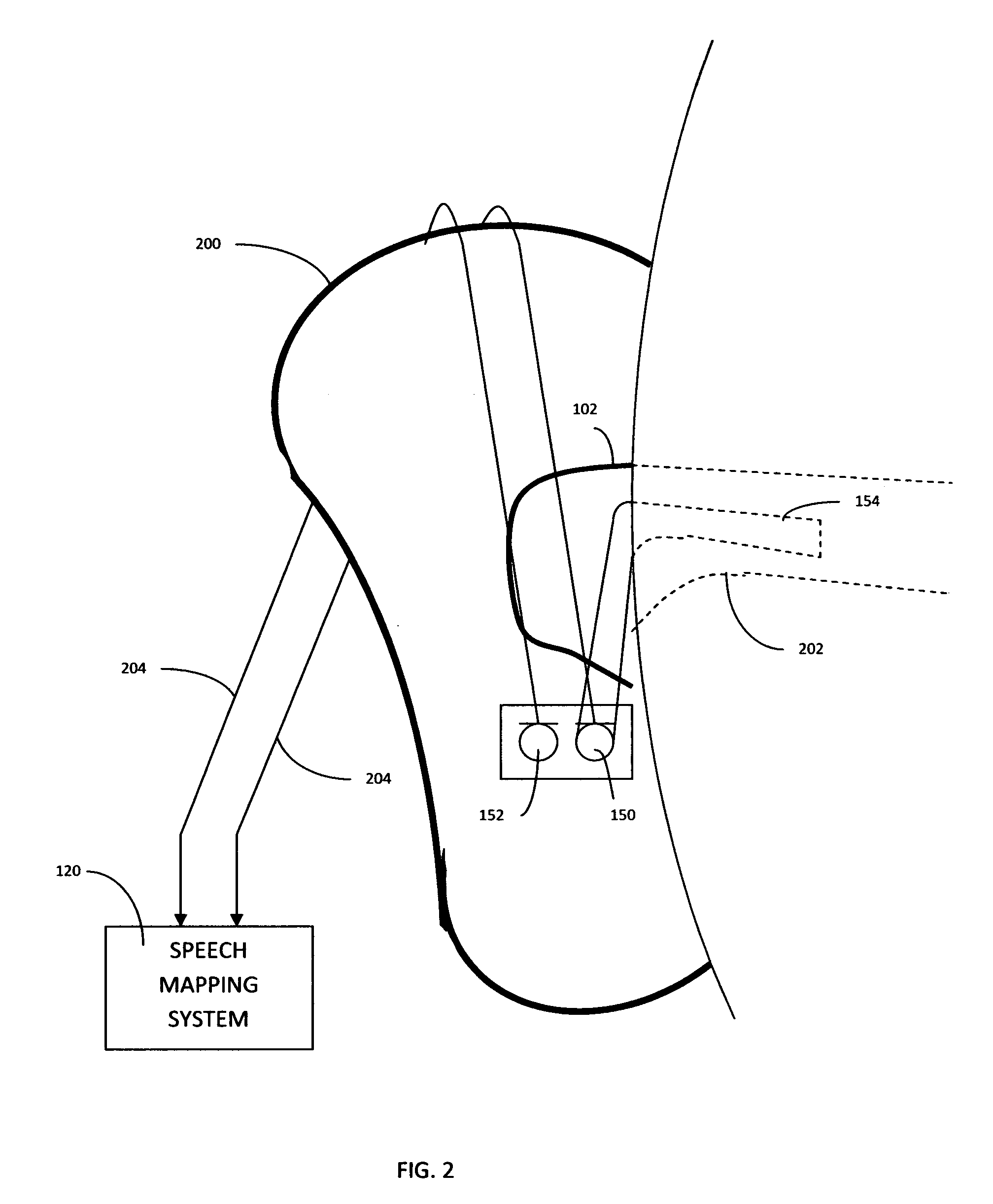Automated real speech hearing instrument adjustment system
- Summary
- Abstract
- Description
- Claims
- Application Information
AI Technical Summary
Benefits of technology
Problems solved by technology
Method used
Image
Examples
Embodiment Construction
[0027]A system and method that automatically adjust the parameters of a digital, programmable hearing instrument utilizing information derived from the results of speech mapping are presented. As used herein “speech” (unless specifically indicated otherwise) refers to live speech, pre-recorded speech signals, speech and noise signals, music signals and / or speech-like stimuli, calibrated stimuli, pure tones, random speech noise or other complex audio signals.
[0028]In one embodiment of the disclosed system and method, the dispenser or fitter of the hearing instrument obtains information through the use of a speech mapping system. The information obtained from the use of the speech mapping system is specific to the performance of the hearing instrument, the resonance of the user's external auditory canal and pinna, and the instrument user's hearing loss. Embodiments of the disclosed system and method utilize the hearing instrument manufacturer's fitting software and the information obt...
PUM
 Login to View More
Login to View More Abstract
Description
Claims
Application Information
 Login to View More
Login to View More - R&D
- Intellectual Property
- Life Sciences
- Materials
- Tech Scout
- Unparalleled Data Quality
- Higher Quality Content
- 60% Fewer Hallucinations
Browse by: Latest US Patents, China's latest patents, Technical Efficacy Thesaurus, Application Domain, Technology Topic, Popular Technical Reports.
© 2025 PatSnap. All rights reserved.Legal|Privacy policy|Modern Slavery Act Transparency Statement|Sitemap|About US| Contact US: help@patsnap.com



